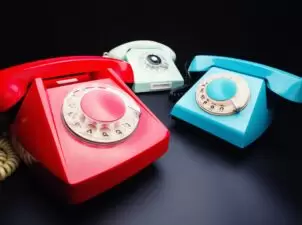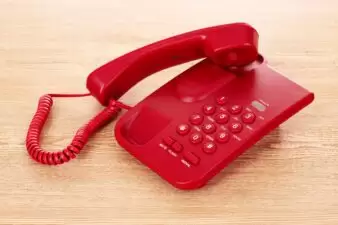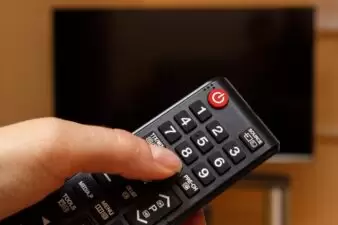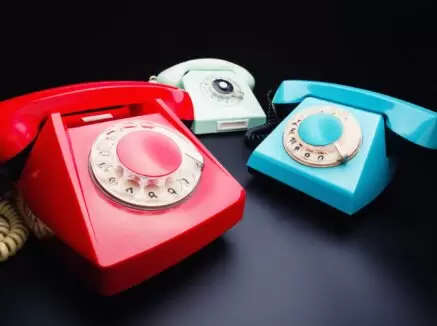
In an era defined by rapid technological advancement and shifting cultural landscapes, the generational divide is more apparent than ever in the usage and perception of everyday items. Gen Z, those born from the mid-1990s through the 2000s, are at the forefront of embracing new technologies and lifestyles that render many once-common items obsolete. Here, we dive into 20 everyday items that may very well become unfamiliar relics to Gen Z individuals during their lifetimes.
1. Physical Maps and Atlases

Gone are the days when unfolding a giant paper map was the first step in planning a road trip. Gen Z relies heavily on digital navigation systems, such as Google Maps and Waze, which provide real-time updates, traffic conditions, and even alternative routes. The convenience and efficiency of these digital tools have significantly diminished the practicality of traditional maps and atlases.
2. Landline Telephones

With the ubiquity of smartphones and the increasing reliability of cellular networks, the landline telephone has become an anachronism in many households. For Gen Z, the concept of a home-bound communication device is not only outdated but also limiting, given their preference for on-the-go digital communication through various platforms and apps.
3. Compact Discs (CDs)

The digital streaming revolution has transformed the way Gen Z consumes music, making CDs seem like a cumbersome and inefficient method of accessing tunes. Services like Spotify, Apple Music, and YouTube have provided instant access to vast music libraries, personalized playlists, and new releases, all at the tap of a screen.
4. Physical Newspapers and Magazines

Digital media consumption is second nature to Gen Z, making physical newspapers and magazines less appealing. Online platforms offer real-time news updates, a wider range of content, and interactive features like video and social sharing, which are more aligned with the dynamic consumption habits of younger generations.
5. Checks and Cash

Digital transactions are becoming the norm for Gen Z, with peer-to-peer payment apps, online banking, and cryptocurrencies gaining traction. The inconvenience of writing checks or the need to carry cash is viewed as outdated, as digital payments offer speed, security, and convenience that traditional methods cannot match.
6. Manual Cars

The shift towards automatic transmission vehicles and the rise of electric cars are making manual cars a rare sight, especially among Gen Z drivers. The ease of driving, combined with advancements in automotive technology, makes manual transmission less appealing and, for many young drivers, unnecessary to learn.
7. Cable Television

Streaming services have revolutionized the way Gen Z watches TV shows and movies, making traditional cable subscriptions less relevant. With the ability to watch what they want, when they want, without the constraints of a broadcast schedule or commercial interruptions, streaming platforms cater perfectly to the demands of younger viewers.
8. Alarm Clocks

The multifunctionality of smartphones has made standalone alarm clocks almost redundant. For Gen Z, using a smartphone for alarms is not only more convenient but also offers a plethora of customizable options, from different alarm tones to various snooze settings, all integrated into a device that’s already an essential part of their daily lives.
9. Paper Tickets

The digitalization of ticketing for events, public transport, and air travel is rendering paper tickets obsolete. With most tickets now available on smartphones, the process is more streamlined, environmentally friendly, and less prone to loss or damage, aligning with Gen Z’s preference for digital solutions and sustainability.
10. USB Flash Drives

Cloud storage solutions like Google Drive, Dropbox, and iCloud are making USB flash drives unnecessary for data storage and transfer. The ability to access files from any device, share large files instantly, and collaborate in real-time suits the dynamic, connected lifestyle of Gen Z far better than physical storage devices.
11. DVD Players

Much like CDs, the physical format of DVDs is becoming obsolete with the rise of digital streaming platforms. The convenience of having a wide array of content available on-demand, without the need to purchase, store, or maintain physical media, aligns perfectly with the preferences of Gen Z consumers.
12. Analog Watches

In an age dominated by smartwatches and smartphones, the traditional analog watch is losing its appeal among Gen Z. While still appreciated as a fashion accessory, the functional aspect of keeping time is now covered by more advanced, multifunctional devices that offer a wide range of additional features.
13. Fax Machines

Once a staple in offices around the world, fax machines have become virtually obsolete with the advent of email and digital document-sharing services. For Gen Z, the concept of transmitting documents through such a cumbersome and slow process is not only outdated but also inefficient.
14. Phone Books and Yellow Pages

The digital age has rendered phone books and Yellow Pages nearly useless as Gen Z turns to online search engines and digital directories for information. The instant access to a wealth of information online, including reviews and maps, makes the traditional phone book an unnecessary clutter.
15. Incandescent Light Bulbs

With a strong inclination towards sustainability, Gen Z is more likely to use energy-efficient lighting options like LED and CFL bulbs. The inefficiency and shorter lifespan of incandescent bulbs, coupled with their greater environmental impact, make them a less favorable option for this eco-conscious generation.
16. Handwritten Letters

In the digital communication era, the art of writing handwritten letters is fading. While still cherished for their personal touch, the immediacy and convenience of emails, texts, and instant messaging apps have made them a rarity in Gen Z’s everyday communication.
17. Desktop Computers

The rise of laptops, tablets, and smartphones with powerful computing capabilities has led to a decline in the use of traditional desktop computers, especially among Gen Z. The preference for mobility, versatility, and space-saving solutions makes desktops less appealing to this generation.
18. Physical Photo Albums

Digital photography and social media platforms have changed the way Gen Z stores and shares memories. With photos now primarily taken on smartphones and stored in the cloud, the traditional physical photo album is becoming a thing of the past.
19. Encyclopedias

The vast repository of information available online has all but eliminated the need for physical encyclopedias. Websites like Wikipedia offer Gen Z a constantly updated, easily accessible source of information on virtually any topic, making the multi-volume encyclopedia sets obsolete.
20. Dial-Up Internet

The concept of dial-up internet is utterly foreign to most of Gen Z, having grown up in an age of high-speed broadband and Wi-Fi connections. The slow speeds and limitations of dial-up are inconceivable to a generation accustomed to instant, always-on internet access.
Why Gen Z Might Never Might Never Use These Everyday Items

As we navigate through the 21st century, the continued evolution of technology and changing societal norms will likely render even more everyday items obsolete. For Gen Z, adaptability and a forward-looking perspective are key in embracing the innovations that will shape their future, leaving behind the relics of the past.
Read More:
11 Discontinued Technologies That Are Making a Surprising Comeback
How Gen Z Is Redefining Spirituality: 10 Surprising Trends
Catherine is a tech-savvy writer who has focused on the personal finance space for more than eight years. She has a Bachelor’s in Information Technology and enjoys showcasing how tech can simplify everyday personal finance tasks like budgeting, spending tracking, and planning for the future. Additionally, she’s explored the ins and outs of the world of side hustles and loves to share what she’s learned along the way. When she’s not working, you can find her relaxing at home in the Pacific Northwest with her two cats or enjoying a cup of coffee at her neighborhood cafe.

